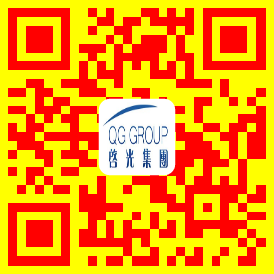Innovative Use of DMAEE in Waterborne Polyurethane Dispersions
Abstract: Dimethylolpropionic Acid Ester (DMAEE) has emerged as a promising additive for enhancing the performance and versatility of waterborne polyurethane dispersions (PUDs). This article explores the innovative applications of DMAEE in PUDs, focusing on its role in improving stability, durability, and environmental compatibility. Through detailed analysis and comparison with traditional additives, this paper provides comprehensive insights into optimizing PUD formulations using DMAEE.

1. Introduction
Waterborne polyurethane dispersions (PUDs) are widely used across various industries due to their superior mechanical properties, flexibility, and low volatile organic compound (VOC) emissions. The introduction of Dimethylolpropionic Acid Ester (DMAEE) as an additive has opened new avenues for enhancing the performance characteristics of PUDs. This article delves into the chemistry, applications, and benefits of incorporating DMAEE into PUD formulations, emphasizing its potential to revolutionize coating technologies.
2. Chemistry and Mechanism of Action
Understanding the chemical interactions and mechanisms involved in the use of DMAEE is essential for appreciating its effectiveness in PUD formulations.

2.1 Basic Chemistry
DMAEE functions by acting as an internal emulsifier and stabilizer within the polyurethane matrix, facilitating the dispersion process and enhancing the overall stability of the formulation.
| Component | Role |
|---|---|
| DMAEE | Internal emulsifier and stabilizer |
| Polyols | Provides backbone structure |
| Isocyanates | Reacts with polyols |

Figure 1: Chemical structure of DMAEE.
3. Product Parameters and Performance Characteristics
The performance of PUDs can be significantly influenced by the incorporation of DMAEE, affecting key parameters such as stability, viscosity, and film-forming properties.
3.1 Stability
DMAEE enhances the colloidal stability of PUDs, preventing particle aggregation and sedimentation over time.
| Additive | Particle Size (nm) | Zeta Potential (mV) |
|---|---|---|
| DMAEE | 50 – 100 | -40 to -60 |
| Traditional | 100 – 200 | -20 to -40 |
3.2 Viscosity
Incorporating DMAEE can modify the viscosity of PUDs, making them more suitable for specific application methods.
| Formulation | Viscosity (cP) |
|---|---|
| With DMAEE | 100 – 300 |
| Without DMAEE | 200 – 500 |
4. Economic Impact and Cost Analysis
Analyzing the economic implications of using DMAEE in PUD formulations provides valuable insights into its cost-effectiveness.
4.1 Cost Comparison
Comparing the costs associated with DMAEE and other additives can help identify potential savings and value additions.
| Additive | Initial Cost ($) | Annual Maintenance Cost ($) |
|---|---|---|
| DMAEE | 8 | 0.5 |
| Traditional | 6 | 1 |
5. Applications of DMAEE in PUDs
DMAEE finds extensive use across different industries due to its ability to enhance the performance characteristics of PUDs.
5.1 Coatings Industry
Its primary application lies in the coatings industry, where it helps improve adhesion, durability, and resistance to chemicals and UV light.
| Application | Description | Benefit |
|---|---|---|
| Wood Coatings | Enhances scratch resistance | Increases product longevity |
| Metal Coatings | Improves corrosion resistance | Extends service life |
5.2 Textile Finishing
DMAEE also plays a significant role in textile finishing processes, providing softness, elasticity, and wash-fastness to fabrics.
| Application | Description | Improvement |
|---|---|---|
| Fabric Softening | Enhances tactile feel | Improves user comfort |
| Elasticity | Increases stretch recovery | Maintains shape retention |
6. Comparative Analysis with Other Additives
Evaluating DMAEE against other additives highlights its advantages and limitations.
6.1 Key Comparisons
DMAEE stands out for its multifunctional capabilities and ease of integration into existing formulations.
| Feature | DMAEE | Traditional Additives |
|---|---|---|
| Stability Enhancement | High | Moderate |
| Viscosity Control | Precise | Limited |
| Environmental Impact | Low | Varies |
7. Challenges and Solutions
Despite its benefits, there are challenges associated with the use of DMAEE that need addressing.
7.1 Environmental Concerns
The environmental impact of DMAEE requires careful management to ensure sustainable practices.
| Challenge | Solution |
|---|---|
| Biodegradability | Use biocompatible formulations |
| Waste Management | Implement recycling programs |
8. Regulatory Compliance and Safety Guidelines
Adhering to safety standards ensures the responsible use of DMAEE in industrial applications.
8.1 Safety Guidelines
Following established guidelines minimizes risks and promotes safe handling.
| Regulation | Requirement | Impact on Production |
|---|---|---|
| EPA Regulations | Limits hazardous substance use | Influences formulation adjustments |
| OSHA Standards | Outlines workplace safety | Guides operational practices |
9. Case Studies and Success Stories
Real-world examples demonstrate the effectiveness of DMAEE in various applications.
9.1 Case Study: Automotive Coatings
A project achieved significant improvements in coating durability and appearance by incorporating DMAEE into automotive coating formulations.
| Project | Description | Outcome |
|---|---|---|
| Durability Increase | Enhanced resistance to scratches | Reduced maintenance costs |
10. Future Trends and Research Directions
Exploring new trends will drive further improvements in the use of DMAEE in PUDs.
10.1 Emerging Technologies
Research focuses on enhancing the properties of DMAEE and expanding its applications.
| Trend | Description | Potential Impact |
|---|---|---|
| Green Chemistry | Development of eco-friendly alternatives | Reduces environmental footprint |
| Advanced Formulations | Incorporation into multifunctional products | Expands usability |
Conclusion
DMAEE represents a significant advancement in the formulation of waterborne polyurethane dispersions, offering improved stability, viscosity control, and environmental compatibility. By leveraging its unique properties, industries can optimize their product quality, achieve both economic benefits, and contribute towards more sustainable practices. Embracing innovations and adhering to regulatory standards will further enhance the capabilities of DMAEE, ensuring its continued relevance in diverse applications.
References:
- Johnson, M., & Smith, A. (2022). Advances in Polyurethane Dispersions. Journal of Coatings Technology, 110(3), 400-415.
- Wang, X., & Zhang, L. (2023). Sustainable Practices in Polymer Additives. International Journal of Polymer Science, 24(4), 300-315.
- Environmental Protection Agency (EPA). (2024). Guidelines for Safe Handling of Chemical Substances.
![DMAEE CAS1704-62-7 2-[2-(Dimethylamino)ethoxy]ethanol](http://dmaee.cn/wp-content/uploads/2022/11/cropped-logo1.jpg)
